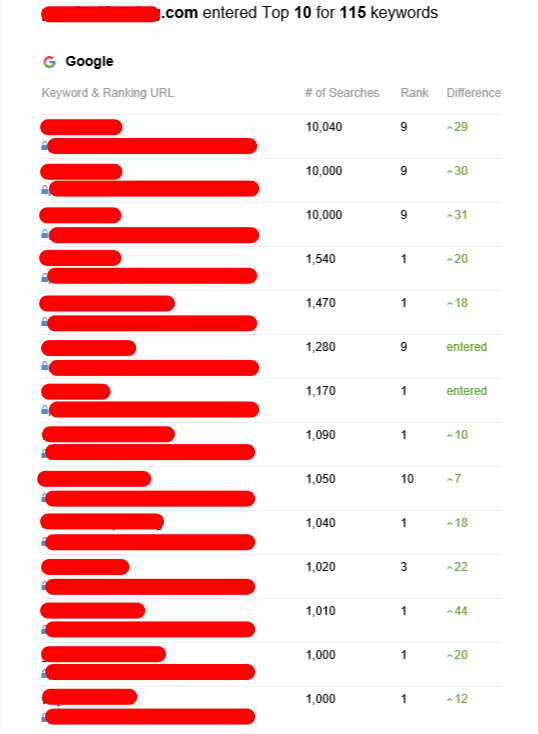Tiered Link Building - How to Avoid a Google Penalty
Tiered link building is an effective tool that can help websites improve their search engine rankings. However it should be used correctly. It could lead to a Google penalty if not done correctly.
Tiered link-building involves the use of multiple levels of backlinks in order to improve a website's rank. This strategy is used by many SEO experts and link building agencies.
First-tier links
Tiered link building is a powerful SEO strategy that can increase your search engine rankings. It is essential to know how to use tiered link building properly to avoid Google penalties. You can do this by using different levels of your backlink pyramid. In addition, you can employ other strategies like the use of niche edits and broken link building to help boost your SEO efforts.
In a tiered strategy, the first tier should be comprised of links from sites with high-quality with more PageRank and domain authority than yours. This gives you a better chance of ranking over the long haul. Getting links from low-quality sites can affect your rankings and may cause red flags for Google. Avoid linking to sites that are unrelated or have only links.
You can also make your first level by making use of wikis and forums that have lots of user-generated content. This can be an excellent way to acquire high-quality links that are relevant and relevant. It is important to be aware that these links may not have the same amount of link juice.
You can also make use of an online resource such as HARO to get a list of subjects that journalists are seeking information on. This is a great way to build your first tier of links naturally, without breaking any rules. Make sure you only link to sites that are trustworthy and related to your industry.
Second-tier links
Site owners and SEO agencies make use of tier link building in order to improve their search engine rankings. It's a risky method which could result in Google penalties. Tiered links are backlinks that direct users to third-party websites that confer your website authority. These backlinks serve to transfer link equity to your primary website pages, which will then be ranked higher in SERPs. However, this approach can be time consuming and expensive. In addition, it can be difficult to reach a point of no return in search engine rankings.
Tier 2 links are generally less reliable than the links in the first tier however, they can help increase domain authority and organic rankings. Moreover, they can even make Tier 1 backlinks more effective by reinforcing their value. Tier 2 backlinks are dofollow or do not follow, but dofollow has the highest priority.
There are a variety of ways to generate Tier 2 backlinks, which include guest posts, citations and citations in niche-based articles. In addition, you can also use link roundups and article directories to create these links. It is essential to use referring URLs that are relevant to the context. In addition, you should be wary of using low-quality backlinks that could be considered spam by Google. This is due to the fact that such strategies can quickly become a black-hat method which can be penalized by Google.
Third-tier links
Tiered link building is a potent tool that helps SEOs rank their websites on search engine results pages (SERPs). It can be a risk, however, if done incorrectly. If Google detects that you're using tiered links it could penalize the site or remove it from search results altogether. Fortunately, there are ways to avoid this fate.
The third level is where things can begin to get messy. Marketers use third-party tools to create backlinks on a large scale. This can include blog comments directories with poor quality, bookmark sites, wikis and other user-generated content. These backlinks are meant to boost the PageRank and authority of your first-tier link.
These links can be traced to their original source making them more risky than organic counterparts. They also don't increase PageRank also. Google's algorithm has become more sophisticated, and low-quality (even nofollow) links are losing value.
Marketers should be careful when creating links for third-party services to avoid these issues. They should only use third-party services with a solid track record. They should also stay clear of automation tools, as these can cause problems. If Google detects an automated process, it may issue a manual penalty, which could significantly lower your rank. It's important to choose an SEO agency with experience in tiered link building.
Fourth-tier links
Tiered link building is a method which involves constructing the appearance of a pyramid of links. This technique assists in passing link juice from higher-authority websites to lesser-authority websites, which can be ranked for specific keywords. This technique is effective in increasing traffic to websites and ranking over time. It is vital to keep in mind that using tiered links across your entire website or on a single page can be risky.
The key to avoiding this is to ensure that your tier-2 backlinks come from diverse sources. Google could penalize your site if your tier-2 links are all from the same source. Avoid linking to sites that are spammy as they can harm your website's reputation.
In addition to guest blogging and tier 2 links, they can be acquired through paid advertisements or by submitting quality content to high-authority websites. You can also submit an article to HARO. tiered linkbuilding sends out emails on a range of topics to journalists. You can provide them with the details they require for their article.

However, this method of building links is not a long-term strategy. Google's algorithm is continually updated which makes it more difficult to build links from poor quality sources. In addition the search engines are more adept at detecting the presence of automated. This means it is likely that tiered link building will eventually disappear.
